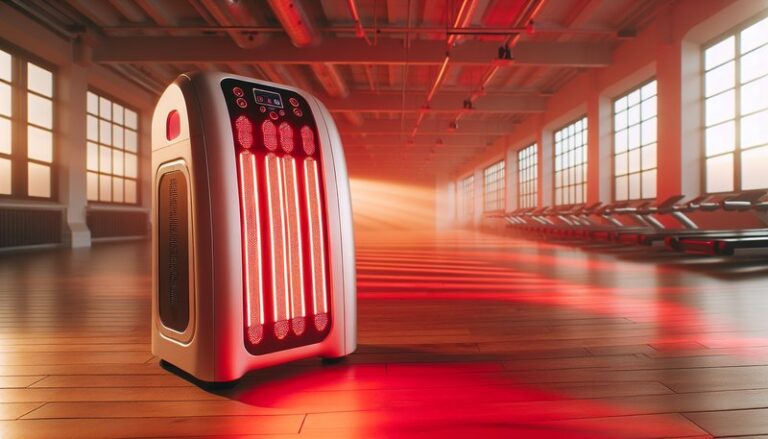Is Red Light Therapy The Same As Infrared Sauna?
Are you curious about the growing popularity of red light therapy and infrared saunas? With both of these therapies claiming to offer numerous health benefits, it’s essential to understand how they differ and how they can be used effectively in wellness routines.
This article will clarify the differences and similarities between red light therapy and infrared saunas, exploring their benefits, potential drawbacks, and the unique advantages of each treatment method. By the end, you will have a comprehensive understanding of how these therapies can fit into your health and wellness practices.
Key Takeaways
- Red light therapy and infrared saunas operate on different light wavelengths, affecting the body in distinct ways.
- Both therapies offer considerable health benefits, including improved skin health and reduced inflammation.
- Personal goals and health conditions should guide your choice between red light therapy and infrared sauna.
What is Red Light Therapy?
Red light therapy (RLT) is a non-invasive treatment that utilizes specific wavelengths of light, typically between 600 to 800 nanometers, to stimulate cellular function. This therapy encourages the production of ATP (adenosine triphosphate), which provides energy to cells, significantly aiding in healing and recovery processes.
RLT is often delivered via LED devices and is used for various purposes, including:
- Reducing inflammation and promoting wound healing.
- Improving skin conditions such as acne, eczema, and scars.
- Stimulating hair growth in cases of androgenetic alopecia.
What are the Benefits of Red Light Therapy?
Exploring the advantages of red light therapy can illuminate why it has become a popular treatment option among health enthusiasts.
Enhanced Skin Health
Red light therapy can significantly improve skin appearance by boosting collagen production and reducing fine lines. Many users report firmer skin with a more youthful look after consistent treatments.
Pain Relief and Healing
Studies indicate that RLT can alleviate pain associated with conditions like arthritis and tendonitis. By reducing inflammation and promoting recovery, it offers a natural alternative to pain medications.
Improved Muscle Recovery
Athletes frequently incorporate red light therapy to expedite muscle recovery post-exercise. The improved circulation and reduced soreness can enhance athletic performance.
Cellular Regeneration
RLT enhances cellular regeneration, making it a potent treatment for various skin conditions. Its ability to promote healing can be invaluable for those recovering from surgeries or injuries.
What is an Infrared Sauna?
An infrared sauna utilizes infrared light to create heat. Unlike traditional saunas, which use steam or heated air, infrared saunas warm the body directly, providing a range of therapeutic benefits.
Infrared saunas typically operate at lower temperatures compared to traditional saunas, making the experience more comfortable for many users.
What are the Benefits of Infrared Saunas?
Understanding the benefits of infrared saunas reveals their appeal for relaxation and wellness.
Detoxification
Infrared saunas promote sweating, aiding in the detoxification process by helping to eliminate harmful toxins stored in the body. This natural cleansing can enhance overall health and energy levels.
Weight Loss Support
Regular use of an infrared sauna can support weight loss efforts by increasing metabolism and burning calories during each session. Users often report feeling invigorated after their sauna experiences.
Stress Relief and Relaxation
The warm ambiance of an infrared sauna creates a relaxing environment conducive to stress relief. The heat helps soothe muscles and joints, making it easier to unwind and escape from daily challenges.
Cardiovascular Benefits
Infrared saunas can improve cardiovascular health by promoting blood circulation. This can lead to lower blood pressure and improved heart health, similar to the benefits of moderate exercise.
Is it Possible to Combine Red Light Therapy and Infrared Sauna?
For individuals considering enhancing their wellness routine, combining red light therapy with infrared sauna sessions may be a viable option.
What are the Advantages of Combining Both?
Integrating both therapies can provide a comprehensive approach to health and well-being.
Discover our thoughts on Can Red Light Therapy Harm Eyes?
Enhanced Healing Effects
Utilizing both therapies can amplify healing benefits, especially for skin rejuvenation and muscle recovery. The combination may promote faster recovery times and improved overall health.
Greater Relaxation Experience
The combination of infrared sauna warmth and red light therapy’s soothing effects creates a deeply relaxing experience, making it easier to manage stress and anxiety.
Diverse Health Benefits
By leveraging the advantages of both red light therapy and infrared saunas, users can address various health concerns intuitively, boosting overall wellness.
What are the Things to Consider Before Choosing Between the Two?
Understanding your personal health and wellness needs is essential before deciding between red light therapy and infrared sauna.
Health Conditions
Consider any pre-existing health conditions. Those with specific skin disorders may benefit more from red light therapy, while individuals seeking detoxification might prefer infrared saunas.
Read our take on Optimal Wavelength for Red Light Therapy
Personal Goals
Identify your wellness goals. If relaxation and detoxification are your priorities, infrared saunas may be more suitable. However, if skin health or muscle recovery is your focus, red light therapy could be the better choice.
Time Commitment
Evaluate the amount of time you can commit. Infrared sauna sessions generally last longer than red light therapy sessions, which may influence your decision based on your schedule.
What are the Alternatives to Red Light Therapy and Infrared Sauna?
Those exploring options beyond red light therapy and infrared sauna have several alternative treatments available.
LED Light Therapy
Similar to red light therapy, LED light therapy uses various wavelengths of light for skin rejuvenation and healing. It can target specific skin concerns and is often available in skincare clinics.
Traditional Saunas
If you’re comfortable with higher temperatures, traditional saunas can provide relaxation and cardiovascular benefits, although they lack the targeted effects of infrared saunas.
Cold Therapy
Cryotherapy offers an entirely different approach to healing and recovery. By exposing the body to cold temperatures, it can reduce inflammation and enhance recovery.
Conclusion: Is it Recommended to Choose Between Red Light Therapy and Infrared Sauna?
Choosing between red light therapy and infrared saunas ultimately comes down to individual health goals and preferences. Both treatments offer remarkable benefits, but they serve distinct purposes. Assess your needs, consult with a healthcare professional if necessary, and consider trying out each option to find the method that best supports your health and wellness journey.
Frequently Asked Questions
Are there any side effects from red light therapy?
Red light therapy is generally considered safe with minimal side effects. Some individuals may experience mild skin irritation or redness, which usually resolves quickly.
How often should I use an infrared sauna?
For optimal benefits, many users recommend 2-3 sessions per week. However, it’s essential to listen to your body and adjust frequency based on comfort and health advice.
Can I use both therapies on the same day?
Yes, many people incorporate both treatments into the same wellness routine. Listening to your body and ensuring adequate hydration is crucial during such sessions.
Are there any contraindications for either therapy?
Individuals with certain medical conditions, such as photosensitivity or severe cardiovascular issues, should consult a healthcare provider before using either therapy. Always prioritize safety and personal health.
What is the best temperature for infrared sauna use?
Infrared saunas typically operate between 120°F to 150°F, allowing for comfort and effective detoxification. Always adjust based on your comfort levels.





